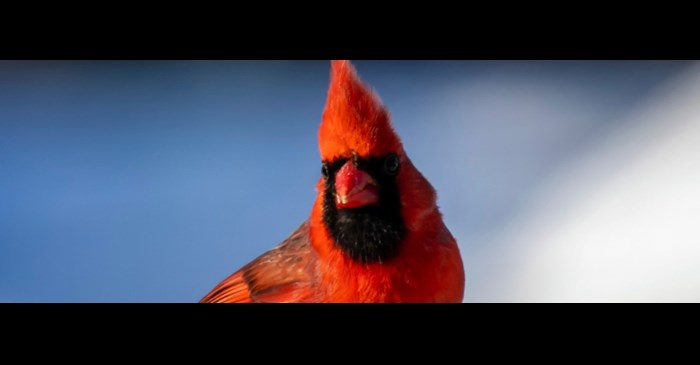We know that many bird species don’t fly south for the winter, and we also know that winter weather can be abominably cold and harsh. In fact, songbird mortality can be 30 to 50% each winter depending on the species, weather conditions, and availability of food, according to Ornithology.com.
So, what do non-migrating birds do to shelter themselves from frigid conditions each year?
Warm by nature
Luckily, Mother Nature has done much to give birds a fighting chance against the elements. Not only are they blessed with high metabolisms and very little exposed skin, but they’re more warm-blooded than humans, meaning their body heat stays constant through all seasons. Some also grow extra feathers and/or pack on extra weight prior to the cold season.
Birds can also take action to make themselves warmer, such as shivering, tucking in their feet and legs, and/or preening their down feathers to create insulative pockets of air. Many also huddle together to preserve heat.
Certain species such as hummingbirds are also able to put themselves into a hibernation-like state called torpor, wherein they lower their body temps from their usual 105 degrees F to about 50 degrees to conserve heat and energy.
But shelter is still important
When they do seek shelter, many birds look for evergreen trees and shrubs that provide better year-round foliage than deciduous trees. Tree cavities are among their favorite spots. Alternatives include brush piles, dense ground cover, discarded Christmas trees, abandoned buildings, chimneys, and human-supplied birdhouses – though not all species will use birdhouses even if they’re available.
Certain species, including ptarmigan and grouse, may even burrow into the snow to find relief from inclement weather.
How can you help our aviary friends this winter? Here are several tips.
- Consider providing several forms of shelter that can help protect a variety of sizes and species.
- Leave brush piles intact in your yard for the winter, seeking spots such as fence corners or shed walls that are relatively sheltered from wind and snow. Evergreen boughs may offer the best protection. Try to leave space inside for both roosting and insulation.
- Furnish your regular birdhouses with wood chips, dry grass, and other insulative materials that may help birds plug holes and cracks.
- Install roost boxes. They’re built like regular birdhouses but offer room for multiple birds to huddle, and low entrance points that help prevent the escape of rising heat. Some of the best ones feature thick, insulative walls; hinged sections for ease of cleaning; metal entrance-point guards to deter predators; mesh interior walls that enable climbing, and multiple inside perches to accommodate lots of birds. Choose dark-colored roost boxes that absorb as much natural heat as possible.
- Consider hanging out roost pockets. Made from malleable natural materials like straw, hay, or wicker, these woven basket-like structures can be surprisingly cozy for smaller birds – especially if you stock it with extra insulation such as wood chips, straw, or grass clippings.
- Try to position your shelters so they’re hard for predators to access and they face south to optimize solar heating. Baffles can keep other animals from climbing poles to prey on the birds.
- Provide birds with easy-to-access water sources and perhaps a heated birdbath.
Finally, you can help your backyard birds this season by continuing to provide them with nutritious, high-quality food – especially the high-fat, high-calorie varieties that provide their bodies energy. Lyric Wild Bird Food offers several excellent options, including the high-fat, high-calorie Sunflower Kernels that can give our feathered friends extra energy all year long.
